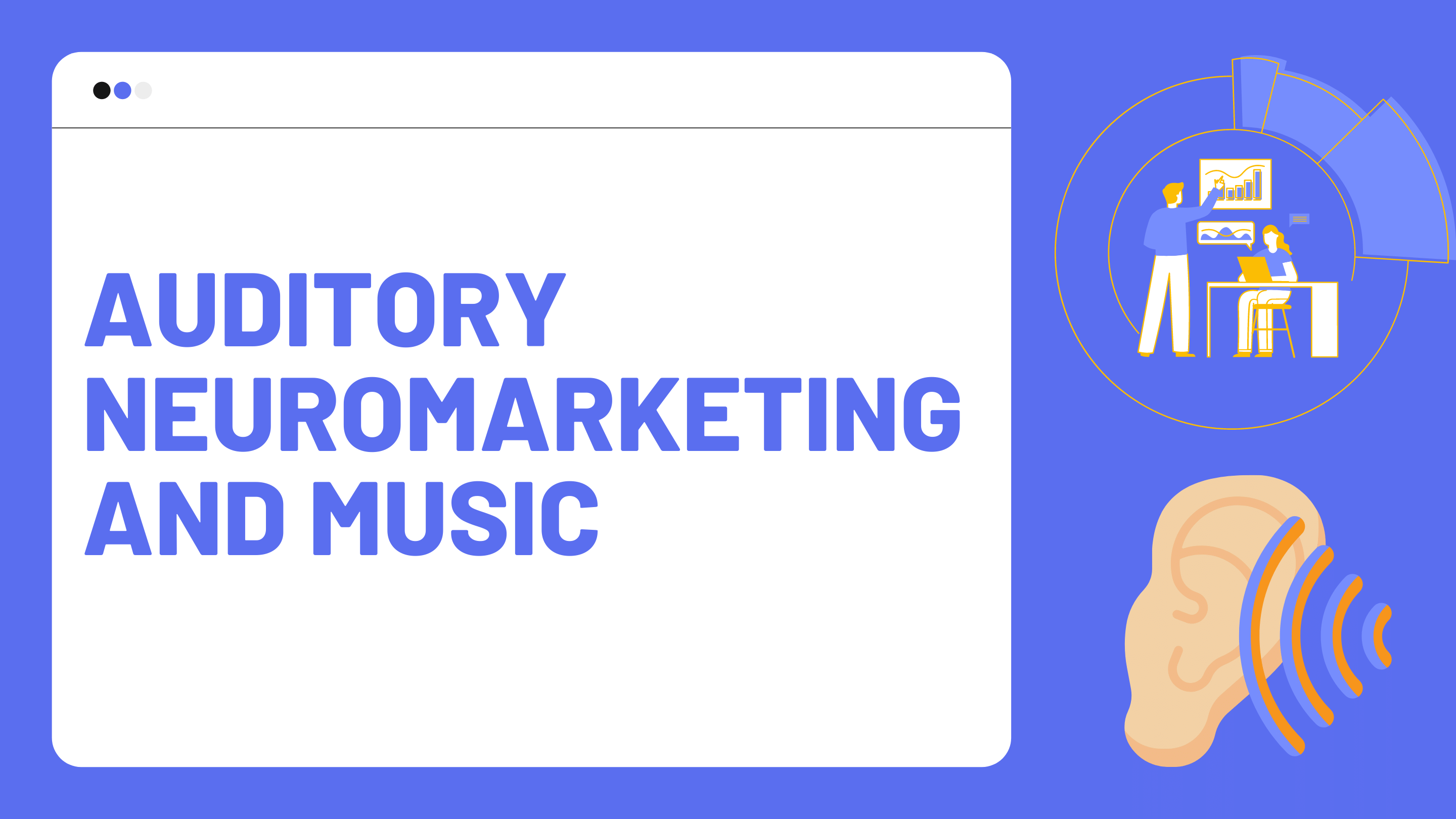Auditory neuromarketing and music: the best allies of your business
All of us at some point in our lives have walked into a shopping mall or local business and heard music in the background. It is not a mere coincidence, it is highly probable that that business understood how auditory neuromarketing works and was looking to apply it to you. Sound penetrate our unconscious without us being able to avoid it, creating responses in the form of feelings, sensations and perceptions of the place where we are. And if we use them in the right way we can influence the behavior of our consumers and potential customers.
So using the tips and information about auditory neuromarketing that we are going to detail now in this article can become a crucial boost and incentive to increase your sales and greatly improve the experience of your customers in your local business.
Without further ado, let’s answer a series of smart questions so you can easily understand and apply Auditory Neuromarketing to your business:
- What is auditory neuromarketing?
- Why use auditory neuromarketing?
- How can we implement it?

What is auditory neuromarketing?
Auditory neuromarketing is a discipline that studies the activation and response of the brain to resonant stimuli produced around us. Thus improving the understanding of our customers and the ability to meet their needs. In this article we will address the most important element of sound: music.
Many brands have been benefiting from auditory neuromarketing for many years (Zara, H&M, El Corte Inglés, Carrefour, Starbucks…) and you can too, and it is extremely easy to benefit from this musical “technique”!
Why use auditory neuromarketing?
Earlier we briefly recounted some of the features that make it so crucial to incorporate auditory neuromarketing into our available toolkit. Let’s dive deeper into why it is so important and crucial. Hold on to your seat, there are curves ahead:
WE ARE ALWAYS LISTENING
Today, people are under the influence of multiple stimuli on a daily basis, many of them generated voluntarily by companies and businesses in order to gain and retain customers. There are so many stimuli in our modern society that it is sometimes difficult to capture the attention of potential customers. However, auditory stimuli do not need to capture the consumer’s attention, they work and influence the customer’s decision making and experience, even without the customer realizing it. Incredible, isn’t it? Well, we are only seeing the tip of the iceberg, auditory neuromarketing has a huge potential waiting to be exploited.
TELL IT TO MY EAR
The ear is the second sense that collects and transmits the most information to our brain. That’s why songs have so much capacity to generate emotions and vary our mood. Who hasn’t worked out to fast electronic music or enjoyed a beautiful sunset while listening to the heavenly sound of Ludovico Einaudi’s piano?
However, despite the influence that music and sounds have on our lives, companies, especially smaller ones (SMEs), neglect this simple opportunity to influence their customers and exponentially improve their experience.

How Can We Implement It Correctly in Our Business?
Incorporating music into our establishment or local business is simple. It simply requires carefully placed speakers and a designed playlist. The difficulty lies in selecting music that is fully compatible with the kind of customer that visits your business and at the same time is congruent with the brand image that your company conveys.
Fortunately, this difficulty is cleared up thanks to the largest study conducted to date on auditory neuromarketing at the prestigious University of Colombia Francisco de Paula Santander.
(https://www.redalyc.org/pdf/4259/425942160007.pdf)
(http://www.scielo.org.co/pdf/cuadm/v31n53/v31n53a11.pdf )
And it is not the only study that supports this information, more and more studies are validating the high performance of this discipline, besides having increased the services related to neuromarketing by nearly 400% in the last 10 years and it does not seem that it will stop. This study sheds light on how elements such as the genre or volume of music influence our establishment or local business.
Influence of musical elements
Musical genre: the musical genre is directly associated with your brand image. If the genre is calm, your brand will be perceived as calm. The most modern musical genres such as “trap” or “k-Pop” are new musical trends that are congruent with the younger audience. On the other hand, a “rock” song from the 70’s will work much better with people of an older age and worse with young people. Adapt the music to your audience, if you have doubts, why don’t you ask them about their musical tastes?
Music volume: currently the ideal volume is that which accompanies the background without being practically perceived, because as we said before, music affects us unconsciously whether we want it to or not because we are always . Although if your audience has an average age of less than 28 years a higher volume is not a problem and even encourages faster decision making that can increlisteningase your sales and promote higher levels of irrationality in the buying process. This is an attractive advantage for any establishment.
Tempo: the tempo or speed at which the music runs matters a lot. A slow tempo encourages customers to stay longer in your store, thus increasing the likelihood of higher consumption and purchases. This strategy is useful when there are few customers in your local business. On the other hand, a fast tempo encourages customers to leave earlier, which can be useful if your establishment is completely full and certain customers cannot be served.
In summary: incorporating music congruent with your brand and your customers into your establishment or local business is very easy to do. Apart from being simple, it has a gigantic capacity to positively and exponentially influence your sales, the perception of your brand and the way your customers behave. The vast majority of SMEs do not use this simple but effective tool… What are you waiting for to improve your results?
If you want to know more about neuromarketing you can also learn more about olfactory neuromarketing in local max by clicking here.
